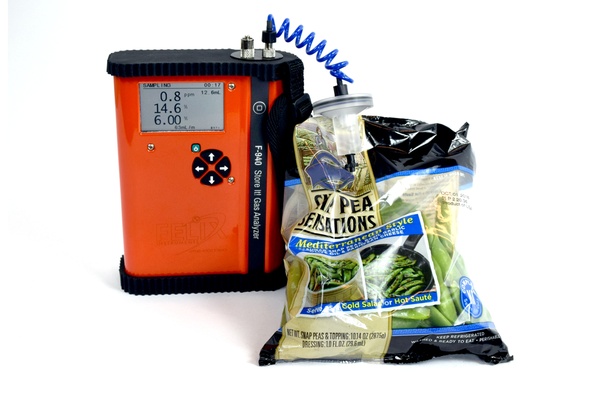Smarter Tools Help Reduce Waste
Due to changes in global dietary patterns, increase of population, combined with the rapid changing of our planet’s climate, there has been a greater demand for fresh produce. As a result, farmers have started growing more produce. However, maintaining food quality and quantity during the transfer of the produce from the fields where it is harvested to the table where it is consumed has been a challenge.
During the transfer process, known as the post-harvest phase, produce can lose its freshness and spoil at a rate of up to 50 percent. Researchers at Felix Instruments- Applied Food Science have been working on developing much needed post harvest tools and techniques which can be used to minimize the spoilage rate.
Optimizing Yields by Utilizing Food Technology
Controlling the post harvest process starts with at the farm. Choosing the best food technology for farming and using superior cultivators that have a long post harvest life can minimize spoilage. Genetic engineers have developed plants strains that are resistant to some of the post harvest changes. This has helped improve the spoilage rates associated with post harvest handling.
Research into understanding the biology of processes as well the environmental conditions involved in the deteriorations of produce has also led to the development of specific tools. The developers and scientists at Felix Instruments-Applied Food Science understand that crops are living tissues that undergo natural changes after they are harvested. While this natural process cannot be stopped, it can be delayed and manipulated with the use of these tools and instruments.
Ethylene & the Ripening Process
Research has shown that the chemical ethylene plays a major role in the ripening process. Ethylene is a hormone that controls the growth and development of a plant by fluxuating the levels of ethylene exposure to the produce, it is possible to positively effect the rate at which the produce ripens. Besides exposure of ethylene, the ripening process is also influenced by whether the produce is inflicted by disease or damage, temperatures fluctuations, and also water loss.
The post harvest phase is further complicated by the fact that some changes are desirable while others are not. For example, the loss of color (chlorophyll) is desirable for vegetables but not for fruits. Consumers prefer the post harvest color changes in fruits as the color represents an increase in carotenoids, which provide nutritional value. Besides color, changes in the carbohydrate, protein, amino acids and fat levels in produce are acceptable in some fruits and vegetables and undesirable in others.
Therefore, post harvest technology has to be designed to manipulate the individual produce changes. By developing specific tools that can manipulate storage temperatures and ethylene exposure, and minimize injury and disease, as well as controlling the water loss that are affordable and that can be used widely has been a challenge.
However, advances in packaging design, storage environment design and modification of transfer time have been used to minimize spoilage and prevent post harvest losses. Researchers have developed food packages and techniques to pack the produce that has helped to slow down spoilage. Packages are now designed to absorb ethylene and maximize moisture retention as needed.
Crop Storage, Handling & Manipulation
Produce storage strategies have been another area of research. Different crops require optimal temperatures and regular venting of ethylene, while other crops require the ethylene to ripen to the desired level.
During storage, produce is prone to fungal and microbial infection that leads to disease and increased spoilage. Researchers have been developing ways to control and modify atmosphere in the locations the produce is stored, which is harmless to humans and can reduce decay caused by fungus, and control damage and diseases caused insects.
Crop handling at the retail location or at warehouses has also been shown to impact ripening. Researchers have developed technology systems that manipulate ripening by adjusting the temperature and the atmospheric conditions in the storage units to ripen the produce to the desired levels.
Besides the development of post harvest tools, food safety has also an area where researchers are conducting studies. The U.S. Food and Drug Administration (FDA) developed principles to ensure that microbial hazard is prevented during the handling of the produce. FDA’s principles address prevention over correction, the use of good agricultural and management practices, minimization of contamination due to water use, avoidance of contamination by fecal material, prevention by addressing worker hygiene, managing the use of manure to protect against microbial contamination, and the recommendation to follow applicable laws.
Using Plant Science to Develop Post-Harvest Technology
From a global perspective, there has been an increase in research around the development of post harvest tools. Felix Instruments- Applied Food Science is honored to particiapate and aid in both the research for Postharvest Technology, as well as the practice in efficient practices regarding Postharvest Technology. Technology for farming has improved which has lead to increases in crop production. The crops need to make it to the consumers in a safe, timely manner with minimal loss. It has become imperative that infrastructure is improved to minimize the loss of produce during storage processing and the retailing of crops, as this is where most of the loss occurs. Researchers are looking at ways to improve infrastructure, from improving efficiency in refrigerated rails cars to improving road services that limit long waits for trucks transporting produce.
Overall, research has played and will continue to play an important role in the development of post harvest technology that have been developed to manage the rate of loss of produce due to spoilage.
Felix Instruments- Applied Food Science uses this research to create Postharvest Tools to minimize Postharvest losses. Please view our tools or talk to an expert for more information on our product line created specificaly to aid farmers and produce shippers in preventing postharvest loss and leading Postharvest Technology practices.




